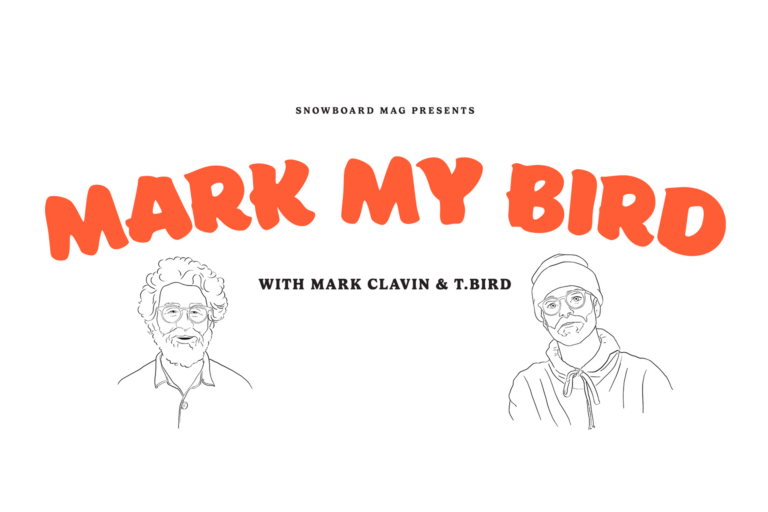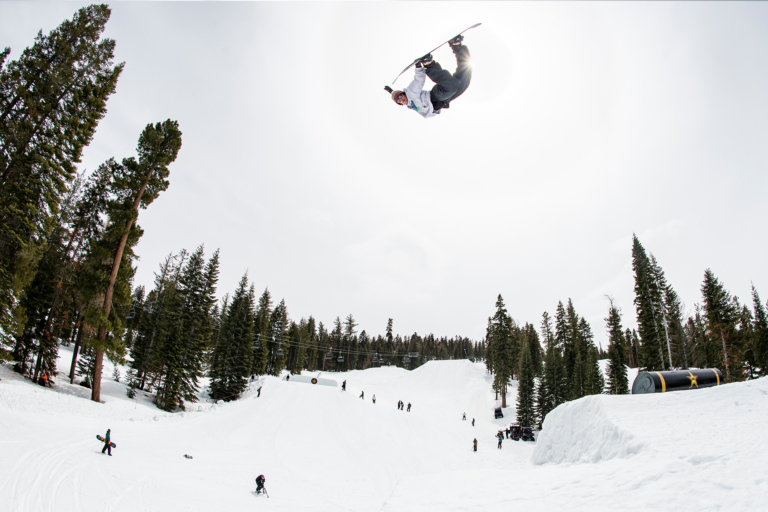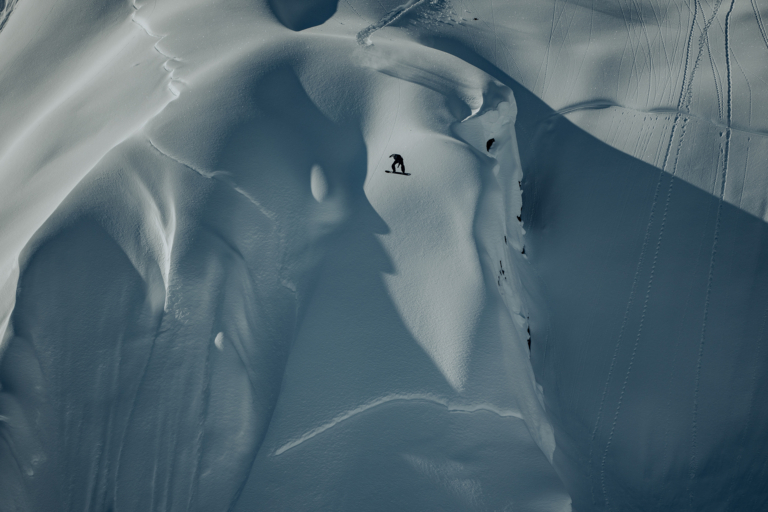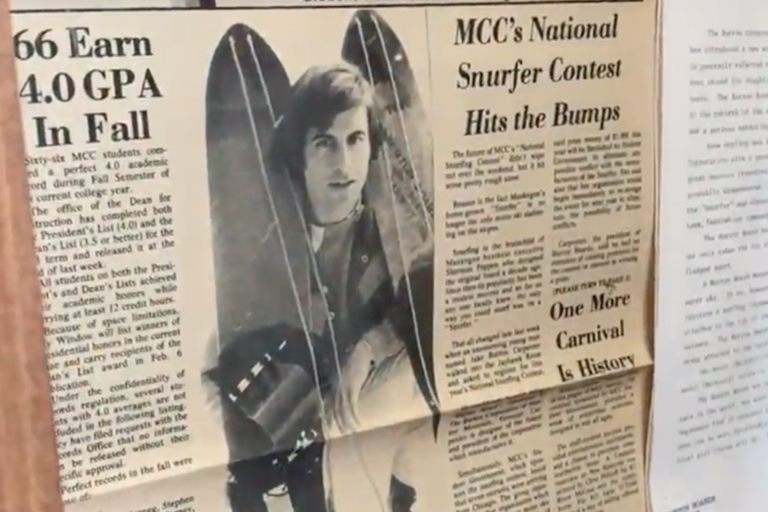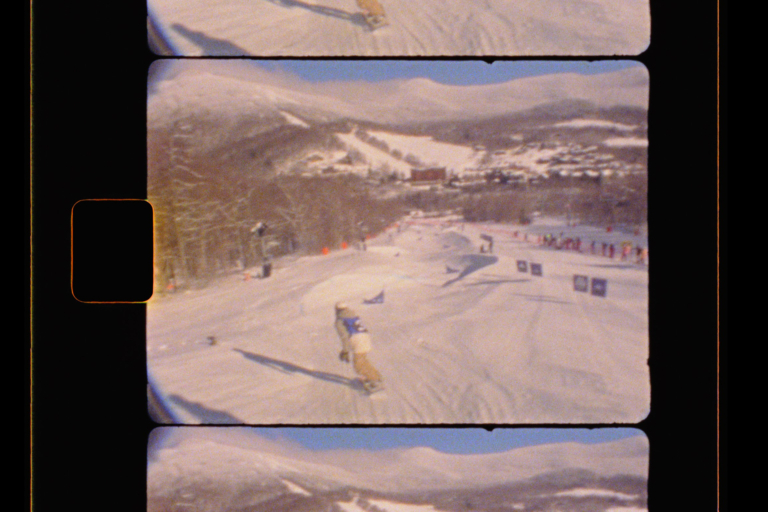
Mike Basich shredding AK | Photo: Aaron Dodds
Getting in touch with Mike Basich is a tough thing to do. He’s not a phone call away like the rest of the plugged-in world. When trying to get in touch with him for this interview, his email, a few days later read:
“Hi, yeah Friday would be great. Please let me know what's a good time as I may be in the woods. I’ll try to make sure I’m in cell range at the ideal time.”
Thankfully he picked up as the proclaimed do-it-yourselfer was on a mission to scope out a log to build a wooden chair for a friend.
You could say he’s the true definition of a man as he has his own “off the grid” shred zone (Area-241) where he goes to get away from it all and get creative. From building his own winch to a customized Pow Truck, if something doesn’t exist that Mike needs, he makes it himself.
Where are you right now?
I just got down from the hill. Was up on my property (Area-241) to scope out what to do next up there. Now I’m going to check out a log so I can build out a wooden chair for a friend.
Let’s talk about Area-241. For people who might not know, what’s it all about?
It’s a space I’m striving to create that I can share with people all of the experience I’ve had over my years of snowboarding. A place where there are no boundaries and you can really hone in on your creative side of riding.
There’s been a lot of places I’ve gone in my career and there always seems to be limitations; something we couldn’t do, whether it’s financial or liability related. So Area-241 was something I wanted to create from my childhood dreams of staying in a creative environment without being connected to the grid.

Mike's Area-241 app. Download it for you iPhone and iPad
So it’s a complete do-it-yourself area.
Pretty much. I really want to create an area where people can come up and enjoy themselves, be creative and do stuff they might not normally do. For example, it’s amazing how many people have never split firewood. That’s something they can definitely do at Area-241.
Where is it located? Or, is it in some super secret location?
I definitely strive to keep it off the map in order to keep a good mix of people coming through, whether it’s industry people, riders or whoever. But the location is key because it just grabs the clouds when they roll over the hill which results in a lot of snow fall.
You also launched the Area-241 app this past year. What was the idea behind having an app for a place that you strive to keep off the grid?
Well the idea was to have a central location for all of the stuff I have done and do up on the hill (Area-241) instead of having to search out different stuff all over the web.
I think a lot of people confuse what I’m all about. The idea of having a place like this and an app for it isn’t about being eco-friendly or being organic. I mean, I have a snow cat, which isn’t an eco-friendly machine. But the app, the way I look at it, is our new age pen and paper. It’s another way for us to get and share information and that’s what I’m trying to do with the Area-241 app.

Mike scoping a line in Hakuba | Photo: Rami Hanafi
How successful has the app been? Have people been stoked on it?
Absolutely. I believe people look at apps as a tool, so with the Area-241 app I tried to provide more information on what it is I do as well. It’s not entirely done yet but I’m trying to branch out to provide a location for information. If you look at how we curate information these days it’s definitely becoming more mobile so I figured this would be a great way to keep people in tune with what I’m doing.
You’re very big into the do-it-yourself mentality and it has a heavy presence within your app from building your own Pow Explorer Truck to designing your own winch. What does this DIY mentality stem from and why is it so important to you?
The DIY mentality stems from wanting to have an appreciation and understanding for the things we use. When it came to creating the truck, that came out of necessity, as there wasn't anything in the market that could handle what I was looking for.
How long did the truck take to fully customize?
It actually didn’t take as long as one would think. I had a lot of interest from a bunch of companies on the idea and just made it happen. Once the sponsors jumped on board I built it in 17 days as I was headed to Alaska. It came down to the wire though. When I left the paint on the truck was still drying.
Has anyone expressed interest in you building another truck for them?
Yeah, there has been a ton of interest, especially in the motocross world in order to haul around bikes. But I don’t know if I want to get into creating more trucks because of the liability. I just don’t know what would happen if someone rolled it, etc.
But I do have dreams of building another one on a much larger scale. One where you could have a team on board, an editing room in the back to pump out webisodes and content while on the road.
The latest DIY project you completed was the 360-degree GoPro setup. How did that come about?
Well I’ve been in photography for some time now and I’m always looking for new cool ways to capture snowboarding. With the GoPro’s being so light and watching how the Matrix was shot, I was inspired. I really wanted to give the viewer a new perspective while they watched an edit from some remote location we were in instead of a linear view of the area. Depending on how I edit it, I can have up to 13 different angles to choose from instead of one. It really opens up a door to be super creative.
Your involvement with Flow has been huge lately as you took on the role of Product Developer. What’s it like having creative control over the new technology and products Flow comes out with?
I’ve been involved with product development since I started snowboarding, but this is the first time I’ve had my hands this deep in the process. And Flow is a company that sticks to something it truly believes in, which is a huge inspiration to me.
Early on Flow’s technology wasn’t really received well but they stuck with it. Over the past three years, working with Flow’s bindings has really opened my eyes. I’m amazed at how quick and comfortable the bindings are. That’s really been my focus while doing product development with Flow. We brought in more options so that no matter what you’re used to you have something you’re comfortable with, whether it be a quick-entry binding or a front-entry strap style binding.
You also took on a mentorship role with the Flow team. What’s it like being a father-like figure to some of the best riders out there?
My side of that has been a mix of teaching the younger ones how to create connection within the snowboard industry. So many of them are used to having agents these days that they don’t think they need to be meeting people or shaking hands.
If you look at my career in snowboarding, having personal connections with people has been huge. I never had an agent and had to do everything myself. Younger kids these days have a bit of an attitude and want to do things their way. So I’ve been really trying to get them to open up, take a step back and see all the moving parts.
This is the first time I’ve done something like this. Everyone at Flow and the team of riders have been awesome and it’s been a great opportunity for me.
